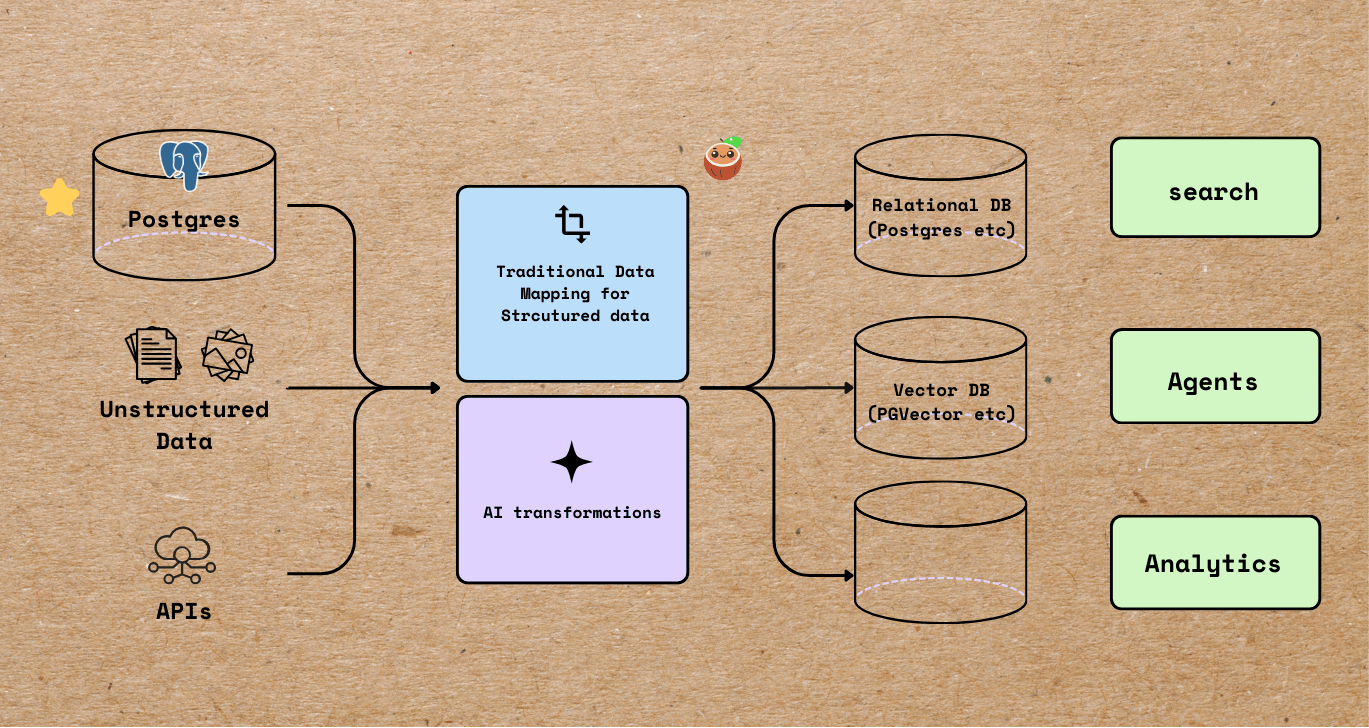Modern economies rely on manufacturing, which produces everything from basic needs to electronics and cars. To stay competitive, manufacturers must adjust to the growing demands for reliability, efficiency, and uptime. Predictive maintenance (PdM) can foresee equipment failures before they happen and plan maintenance; this significantly reduces unplanned downtime. However, predictive maintenance is changing.
Most traditional methods still depend on rule-based algorithms or statistical models, which only capture the simplest connections between sensor signals and failure modes. Embedded generative AI solutions (Gen AI) directly integrate advanced generative or artificial intelligence models into production devices and processes, creating new possibilities for PdM.
Embedded Gen AI changes how manufacturers predict and react to equipment health. It provides real-time, context-aware, deep-learning capabilities on-site.
Why Traditional Predictive Maintenance Isn’t Enough
Predictive maintenance has existed in manufacturing for over a decade. Common approaches include:
- Threshold-based alarms: Alerting users when certain sensor metrics, such as pressure, temperature, or vibration, exceed set limits.
- Statistical trend analysis: Identifying anomalies or shifts using time-series models, like ARIMA.
- Classification and regression with machine learning: Supervised models trained on labeled historical data to predict the chance of failure.
These approaches have improved over time, but face limits:
Static or shallow models: Thresholds and simple regressors can’t adapt to shifts in production loads, environmental conditions, or wear progression. Machine learning models built offline can become stale quickly.
Centralized processing: Data must be sent to a central cloud server. This increases network costs and delays while raising the risk of outages or data security problems.
Limited contextual awareness: Many models do not consider important context, such as material changes, ambient conditions, operator actions, and maintenance records.
Reactive rather than proactive: Alerts typically occur after a metric has already entered a danger zone instead of warning about potential deviations.
Enter embedded Gen AI – the next stage of intelligent, self-adapting, and context-aware PdM.
What Is Embedded Gen AI in Manufacturing?
“Embedded Gen AI” refers to small, optimized generative AI models integrated directly into manufacturing equipment or local control systems, enabling:
On-device inference: Real-time decision-making without constant cloud dependence.
Contextual generation: Predictive outputs considering patterns, anomalies, and “whatif” scenarios.
Adaptive learning: Incremental model updates using local data to stay current.
Core strengths include:
Generative capabilities include creating narratives for failure scenarios, simulating sensor behavior, and producing anomaly diagnoses.
Edge deployment: Using PLCs (programmable logic controllers), Internet of Things gateways, or industrial PCs.
Low latency, high reliability: Essential for making real-time or nearly real-time maintenance decisions in time-sensitive situations.
Privacy and compliance: It stores private production data locally, which is important in industries with limited connectivity or those that are regulated.
Consider an embedded Gen AI that makes predictions like “Bearing wear is accelerating; failure probable within 72 hours unless temperature stays below 60 °C” based on vibration and acoustic sensor streams. Alternatively, it can model the potential effects of rising loads or changes in ambient humidity on your conveyor belts in the days ahead.
Technological Pillars Enabling Embedded Gen AI
Several innovations are converging to make embedded Gen AI practical:
- Model Compression & Optimization
Techniques like quantization, pruning, and knowledge distillation reduce large AI models to compact sizes, only a few megabytes, so that they can run efficiently on devices with limited resources. These “tiny” models keep their generative abilities with high fidelity.
- Tiny and Modular Gen AI Architectures
Frameworks such as TinyML, Edge Transformers, and specialized micromodels allow modular generation tasks – like anomaly pattern synthesis, energytrend prediction, or maintenance-report drafting – without bloated resource usage.
- OnEdge Training / Incremental Learning
Unlike one-time model deployment, embedded systems can periodically retrain using local drift detection and active learning. This enables adaptation to new machines, new tooling, or evolving wear characteristics – all executed in-device.
- Sensor Multimodality and Fusion
To create detailed predictions that consider different aspects of equipment behavior, generative AI models bring together various types of data. This includes vibration, thermal, acoustic, operational logs, and even camera images.
- Cloud-to-Edge Interoperability Orchestration
On-board models manage inference instantly, but centralized improvement (such as fleet-level learning or aggregated model updates) is made possible by periodic synchronization with cloud servers. Distillation then pushes improved models back to the edge, creating a federated learning loop.
Use Cases in Manufacturing
Let’s explore how embedded Gen AI reshapes predictive maintenance across sectors:
Rotating Machinery (Motors, Gearboxes, Bearings)
Active generation of failure signatures: Model synthesizes vibration spectral data under hypothetical wear scenarios, helping detect early-stage bearing pitting or gear misalignment.
Anomaly “counterfactual” reasoning: The system can ask, “What if observed vibration at 5 kHz rises by 10 dB next hour?” and predict the maintenance lead time or failure impact.
CNC and Robot Arms
Acoustic anomaly generation: Embedded Gen AI synthesizes expected acoustic signatures for “healthy” vs. “deviating” joint or spindle behavior, spotting deviations before they escalate.
Maintenance report generation: Automatically drafts human-readable diagnostic summaries and nextstep recommendations – e.g., “Spindle bearing temperature trend rising across 20° C across 3 hours; recommend inspection and lubrication within next 8 hours.”
HVAC and Environmental Monitoring in Plants
Simulated failure scenarios: Generative models can predict how filter clogging, fan imbalance, or coolant level drift will evolve, allowing planning before critical disruptions.
Context-aware early alerts: Combining ambient humidity, particulate sensors, and vibration, the system may generate: “Dust accumulation in the inlet duct likely compromising fan balance; projected overheating within 48 hours if unaddressed.”
Fleet-wide Deployment (Across Many Machines)
Fleet-level generative insights: An edge-deployed Gen AI on each machine creates localized failure simulations and anomaly profiles; aggregated in the cloud, they form a fleet model that uncovers novel failure types or correlates among different units.
Automated model sharing: One machine’s newly discovered wear pattern triggers a “model patch” deployed to all similar units, ultimately reducing fleet-wide risk in near realtime.
Benefits of Embedded Gen AI for PdM
The embedding of Gen AI at the edge delivers several compelling advantages:
- UltraLow Latency
Decisions made milliseconds after anomalies emerge are critical for high-speed machinery or safety-critical operations.
- Greater Resilience
Capable of offline operation in connectivity-challenged environments like remote mining or offshore plants.
- ContextRich Predictions
Generative narratives are richer than binary alerts because they explain why, model “whatifs,” and provide natural-language diagnosis or maintenance guidance.
- Adaptive and Self-Updating
Edge-based learning allows models to quickly adapt to new wear types, product variations, or environmental changes without requiring lengthy retraining cycles.
- Privacy and Security
Sensitive operational or IP-heavy data stays on-site. This reduces exposure and improves compliance.
- Operational Cost Savings
Less data transmission, cloud computing usage, and decreased downtime result in a substantial ROI. Embedding also reduces the need for constant high-bandwidth connectivity, crucial in global, distributed manufacturing.
Challenges & Important Considerations
No transformation comes without its caveats. Embedded Gen AI for predictive maintenance brings several challenges:
A. Model Governance and Validation
Generative AI models are prone to hallucinations or overconfident outputs if poorly trained. Rigorous validation, monitoring, and interpretability frameworks are essential, especially in safety-oriented industries.
B. Resource Constraints
Edge devices vary in compute, memory, and power, and designing models that run robustly within tight limits demands deep embeddedAI engineering skills.
C. Incremental Learning Risks
Device adaptation must avoid catastrophic forgetting – losing previously learned failure signatures – or overfitting localized data. Federated learning protocols, validation rounds, and periodic human oversight are critical.
D. Integration Complexity
Manufacturers’ environments are often heterogeneous, with machinery from different eras, varied communication standards (e.g., OPC-UA, Modbus, Proprietary), and layered automation stacks. Ensuring embedded Gen AI works seamlessly across the ecosystem is a nontrivial engineering feat.
E. Security Risks
While edge AI enhances data privacy, it also creates new attack surfaces; any compromised device might spread misleading maintenance advice or false anomalies. Strong encryption, firmware integrity checks, and secure model deployment practices are paramount.
F. Workforce Readiness
Technicians and maintenance engineers need to trust generative outputs. Human-readable narratives help, but organizations must also train staff to interpret and act on AI-generated recommendations.
Towards a Practical Roadmap
- Pilot with Hybrid Models
Start with a “lite” generative detection model embedded alongside existing analytic systems. Use offline validation and pilot feedback before scaling.
- Build a Federated Loop
Connect edge devices to a central server or platform that aggregates failure observations, curates model updates, applies batch retraining, and distributes compressed model versions.
- Establish Trust and Explainability
Augment generative outputs with confidence scores, visualizations (e.g., spectrograms), and comparison to baseline “healthy” profiles. Include human-in-the-loop validation early on.
- Ensure Continuous Monitoring & Auditing
Track model behaviors over time. Set up alert guardrails when model-generated predictions conflict with sensor thresholds or human assessments.
- Educate and Upskill Teams
Document AI decisions in device dashboards, run “what-if” exercises, and provide up-skilling programs so maintenance teams understand AI strengths, limitations, and best practices.
Future Horizon
Looking ahead, embedded Gen AI will become an ever more powerful ally in smart manufacturing:
Multimodal Diagnostics: Future models blend audio, vision, vibration, thermal, and process logs for holistic insight and root cause generation.
Collaborative Edge AI: al communication among adjacent machines (machine-to-machine generative reasoning) might forecast broader system-level threats like production flow degradation.
Generative “Digital Twins” at the Edge: Each machine runs its own compact digital twin, empowered by generative models that constantly simulate multiple future states and failure pathways.
Autonomous Maintenance Robotics: Embedded Gen AI will power local decision-making for robotic maintenance agents, from when to lubricate to how to disassemble parts safely.
Regulativegrade Certification: Industries like aerospace or pharmaceutical manufacturing may standardize guidelines and certification pathways for generative AI in embedded maintenance systems.
Ultimately, embedded Gen AI heralds a future where factory equipment doesn’t just signal data, it speaks, imagines, adapts, and guides. The shift from reactive, rule-based maintenance to intelligent, narrative-driven, autonomous upkeep will redefine reliability, cost, and flexibility across manufacturing landscapes worldwide.
Conclusion
By embedding generative artificial intelligence directly into manufacturing systems, organizations gain predictive maintenance tools that are context-rich, adaptive, fast, and secure. These systems transcend traditional threshold-based alerts to become generative “thinking” agents – anticipating problems, generating maintenance narratives, and adapting in real time to evolving conditions.
The journey to embedded Gen AI isn’t without challenges: engineering constraints, governance, integration complexity, and human trust remain key checkpoints. Yet with a thoughtful roadmap – starting with hybrid pilots, embedding explainability, building federated loops, and investing in workforce readiness – manufacturers can unlock a new era of resilient, intelligent, and self-aware production.
The maintenance engineer of tomorrow won’t just receive an alarm – they’ll receive a reasoned explanation, a prediction of future states, and a tailored action plan – all generated on the spot by the machine itself. That future is already beginning to take shape in smart factories worldwide.









